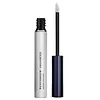What's inside
What's inside
 Key Ingredients
Key Ingredients

 Benefits
Benefits

 Concerns
Concerns

No concerns
 Ingredients Side-by-side
Ingredients Side-by-side

Water
Skin ConditioningDisodium Phosphate
BufferingGlycerin
HumectantBiotin
AntiseborrhoeicCellulose Gum
Emulsion StabilisingPhenoxyethanol
PreservativeChlorphenesin
AntimicrobialPhosphoric Acid
BufferingDechloro Dihydroxy Difluoro Ethylcloprostenolamide
Butylene Glycol
HumectantCalendula Officinalis Extract
Skin ConditioningPanax Ginseng Extract
AntioxidantQuercus Serrata Extract
Skin ConditioningMoringa Oleifera Callus Extract
AntioxidantTriticum Vulgare Germ Protein
EmollientPentylene Glycol
Skin ConditioningSwertia Japonica Extract
Skin ConditioningBiotinoyl Tripeptide-1
Octapeptide-2
Skin ConditioningWater, Disodium Phosphate, Glycerin, Biotin, Cellulose Gum, Phenoxyethanol, Chlorphenesin, Phosphoric Acid, Dechloro Dihydroxy Difluoro Ethylcloprostenolamide, Butylene Glycol, Calendula Officinalis Extract, Panax Ginseng Extract, Quercus Serrata Extract, Moringa Oleifera Callus Extract, Triticum Vulgare Germ Protein, Pentylene Glycol, Swertia Japonica Extract, Biotinoyl Tripeptide-1, Octapeptide-2
Water
Skin ConditioningGlycerin
HumectantPolysorbate 20
EmulsifyingPanthenol
Skin ConditioningSodium Citrate
BufferingLeuconostoc/Radish Root Ferment Filtrate
AntimicrobialAlanine
MaskingAlcohol
AntimicrobialArbutin
AntioxidantArginine
MaskingAspartic Acid
MaskingBiotin
AntiseborrhoeicCalcium Gluconate
HumectantCaprylyl Glycol
EmollientChamomilla Recutita Flower Extract
MaskingDisodium Phosphate
BufferingEthylhexylglycerin
Skin ConditioningGluconolactone
Skin ConditioningGlycine
BufferingHexylene Glycol
EmulsifyingHistidine
HumectantHydrolyzed Glycosaminoglycans
HumectantHydroxyethylcellulose
Emulsion StabilisingIsoleucine
Skin ConditioningSodium Lactate
BufferingMagnesium Ascorbyl Phosphate
AntioxidantPanax Ginseng Root Extract
EmollientPCA
HumectantValine
MaskingPhenylalanine
MaskingPolydextrose
HumectantProline
Skin ConditioningPropylene Glycol
HumectantRicinus Communis Seed Oil
MaskingSerine
MaskingVitis Vinifera Seed Extract
AntimicrobialSodium Hyaluronate
HumectantIsopropyl Cloprostenate
Yeast Extract
Skin ConditioningSodium PCA
HumectantThreonine
Tocopheryl Acetate
AntioxidantTriethanolamine
BufferingPhenoxyethanol
PreservativeSodium Benzoate
MaskingSodium Metabisulfite
AntioxidantWater, Glycerin, Polysorbate 20, Panthenol, Sodium Citrate, Leuconostoc/Radish Root Ferment Filtrate, Alanine, Alcohol, Arbutin, Arginine, Aspartic Acid, Biotin, Calcium Gluconate, Caprylyl Glycol, Chamomilla Recutita Flower Extract, Disodium Phosphate, Ethylhexylglycerin, Gluconolactone, Glycine, Hexylene Glycol, Histidine, Hydrolyzed Glycosaminoglycans, Hydroxyethylcellulose, Isoleucine, Sodium Lactate, Magnesium Ascorbyl Phosphate, Panax Ginseng Root Extract, PCA, Valine, Phenylalanine, Polydextrose, Proline, Propylene Glycol, Ricinus Communis Seed Oil, Serine, Vitis Vinifera Seed Extract, Sodium Hyaluronate, Isopropyl Cloprostenate, Yeast Extract, Sodium PCA, Threonine, Tocopheryl Acetate, Triethanolamine, Phenoxyethanol, Sodium Benzoate, Sodium Metabisulfite
Ingredients Explained
These ingredients are found in both products.
Ingredients higher up in an ingredient list are typically present in a larger amount.
Biotin is a B vitamin that is naturally produced by our bodies. It is also called Vitamin H.
Our bodies use biotin in the metabolism process. It also helps our bodies use enzymes and move nutrients around. A biotin deficiency can lead to brittle hair and nails.
More research is needed on applying biotin topically. However, taking biotin orally has been shown to help nourish the skin, hair, and nails. They play a role in forming skin-hydrating fatty acids.
Biotin is water-soluble. It can be found in foods such as fish, eggs, dairy, nuts, and meat. Vitamin H stands for "haar" and "haut". These are the German words for hair and skin.
Learn more about BiotinDisodium Phosphate is a water-soluble powder used as a pH adjuster.
Glycerin is already naturally found in your skin. It helps moisturize and protect your skin.
A study from 2016 found glycerin to be more effective as a humectant than AHAs and hyaluronic acid.
As a humectant, it helps the skin stay hydrated by pulling moisture to your skin. The low molecular weight of glycerin allows it to pull moisture into the deeper layers of your skin.
Hydrated skin improves your skin barrier; Your skin barrier helps protect against irritants and bacteria.
Glycerin has also been found to have antimicrobial and antiviral properties. Due to these properties, glycerin is often used in wound and burn treatments.
In cosmetics, glycerin is usually derived from plants such as soybean or palm. However, it can also be sourced from animals, such as tallow or animal fat.
This ingredient is organic, colorless, odorless, and non-toxic.
Glycerin is the name for this ingredient in American English. British English uses Glycerol/Glycerine.
Learn more about GlycerinPhenoxyethanol is a preservative that has germicide, antimicrobial, and aromatic properties. Studies show that phenoxyethanol can prevent microbial growth. By itself, it has a scent that is similar to that of a rose.
It's often used in formulations along with Caprylyl Glycol to preserve the shelf life of products.
Water. It's the most common cosmetic ingredient of all. You'll usually see it at the top of ingredient lists, meaning that it makes up the largest part of the product.
So why is it so popular? Water most often acts as a solvent - this means that it helps dissolve other ingredients into the formulation.
You'll also recognize water as that liquid we all need to stay alive. If you see this, drink a glass of water. Stay hydrated!
Learn more about Water